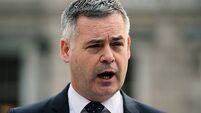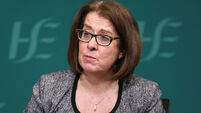Race in still on… for a single party Fine Gael government
Like so much current political commentary however, that is based on the presumption that our campaign is the same as, or similar to, other previous campaigns, here and elsewhere.
But is it? Most definitely not, I’d suggest.
For starters, we’re in the unique situation, in my experience at least, of knowing that there will definitely be a change of government.
We’re aware of that not only from the findings of a sustained series of polls over the past couple of years but also from the unprecedented admission from Fianna Fáil to that effect.
An undisguised acceptance of, and indeed barely-disguised yearning for, a period in opposition has been one of the distinguishing traits of their campaign to date.
Another defining characteristic has been the certainty of the identity of the next Taoiseach — never before have we had a situation where the bookies have called it a 95% certainty. Enda Kenny is in that position a full fortnight out from polling-day, and it is a destiny to which he has been moving inexorably for the last three years, notwithstanding the odd interruption along the way.
Other novel elements of GE11 are the unprecedented levels of information available to the electorate, and just how small a proportion of that information has been derived from the contesting parties. The campaign is the first of its type in Ireland to be fully immersed in the torrent of social media which have revolutionised the pace at which news and other commentary is disseminated.
Finally, we shouldn’t forget, nor should we take for granted, the unprecedented level of education which our modern electorate in general has experienced.
For many years now we congratulated ourselves on the quality of our education system, and the consequent quality and employability of our young people. The Leaving Certificate class of 2010 was the fortieth class to graduate having enjoyed a full secondary school cycle under the terms of Donogh O’Malley’s free secondary education scheme.
By a rough calculation therefore, in excess of two-thirds of our current electorate have had the benefits of a secondary education — an unprecedented situation in our history, and one of real relevance to our current national debate.
For years, Fianna Fáil have been congratulating themselves on the quality of our education system while, incongruously, maintaining an expectation of the graduates of that system that they would vote according to family tradition rather than on the basis of their education.
It has often been said, and with some justification too, that the Roman Catholic Church and the British Empire had one thing in common — they were both founded and flourished on the ignorance of their people. It’s fair to say that Fianna Fáil is not dissimilar, and by no means coincidental that all three institutions are in similar situations of disintegration and disarray.
So where does all that leave us? Eleven days to go and already foregone conclusions in terms of Fine Gael, at least, as lead partner in a coalition government and Enda as Taoiseach.
If that much is clear, what other possibilities are open to us? A single-party government? A minority government with independent or, dare I suggest, Fianna Fáil support? These are now the type of issues that will be played out.
My own long-held view is the not-unlikely scenario of the possibility of a single-party Fine Gael government supported by independents of like mind — like-mind with FG, that is, and not necessarily with each other.
A return for Fine Gael of 70-plus seats is essential for this eventuality; similarly, up to a dozen independents would be required, and not of the United Left Alliance variety either. Those hardy annuals, Lowry and Healy-Rea (mark 2), together with Joe Behan and Mattie McGrath immediately come to mind. Throw in the likes of James Breen in Clare, Tom Fleming in Kerry South, Shane Ross in Dublin South, and possibly Mick Wallace in Wexford among others, and the mathematical challenge is by no means insurmountable, particularly with 10 days to run.
Of one thing we can be sure — the depths to which the electorate have closed their minds in relation to Fianna Fáil. The ‘bounce ‘ from Micheál Martin’s election was always going to be short-lived, and it has duly dissipated, as evidenced by yesterday’s RedC/Sunday Business Post poll. Not even his typically good performance in the TV3 debate could consolidate it.
His challenge now is to target the individual seats around the country most likely to deliver to him the TDs he needs to support him in his declared crusade to fundamentally overhaul the Fianna Fáil organisation. He also needs to ensure he has sufficient numbers to give him the necessary critical mass in the incoming Dáil to ensure his status as leader of the opposition, in the event of Labour being in government.
It’s very much a matter for post-election conjecture, but the possibility of Sinn Féin providing the leader of the opposition in the 31st Dáil is very real, and one which , if materialised, could well make Gerry Adams the biggest winner of the 566 candidates contesting the 165 seats across the 43 constituencies.
Now there’s even more food for thought.












